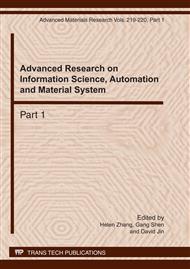p.1558
p.1565
p.1569
p.1574
p.1578
p.1584
p.1589
p.1593
p.1597
Application of Intelligent Algorithm to Transformer Optimal Design
Abstract:
The paper studies transformer optimal design, establishes optimal transformer model based on total owning cost. It adopts penalty function to process objective function with weighted coefficients. For prematurity and low speed of convergence of Simple Genetic Algorithm, improved adaptive genetic algorithm is adopted. It increases crossover and mutation rates, and improves fitness function. It is adopted to search for minimum total owning cost of transformer. The result shows that the algorithm performs well, increases converging speed and betters solution.
Info:
Periodical:
Pages:
1578-1583
Citation:
Online since:
March 2011
Authors:
Keywords:
Price:
Сopyright:
© 2011 Trans Tech Publications Ltd. All Rights Reserved
Share:
Citation:


